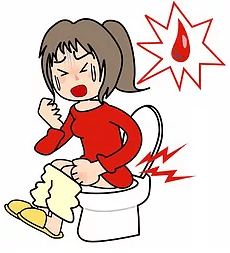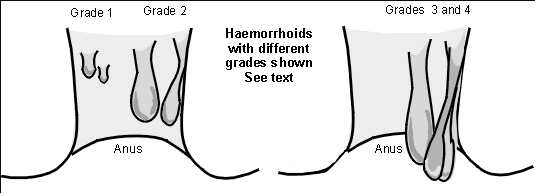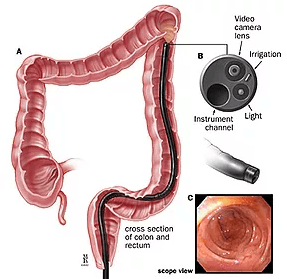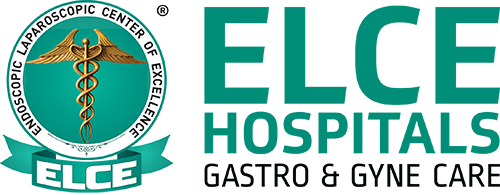laser treatment for piles
Know About
What are piles (hemorrhoids)?
Piles (hemorrhoids) are swellings that can occur inside and around the back passage (anus) and the anal canal. The anal canal is the last part of the large intestine and is about 4 cm long. At the lower end of the anal canal is the opening to the outside (usually referred to as the anus), through which faeces pass. At the upper end, the anal canal connects with the rectum (also part of the large intestine). There is a network of small veins (blood vessels) within the lining of the anal canal. These veins sometimes become wider and engorged with more blood than usual. The engorged veins and the overlying tissue may then form into one or more small swellings called piles. ELCE Hospitals is the Best piles hospital in Coimbatore.
What are the different types of piles (hemorrhoids)?
Internal piles can be classified into grades 1 to 4 according to their severity and size:
- Grade 1 are small swellings on the inside lining of the anal canal. They cannot be seen or felt from outside the anus. Grade 1 piles are common. In some people, they enlarge further to grade 2 or more.
- Grade 2 are larger. They may be partly pushed out from the anus when you go to the toilet, but quickly spring back inside again.
- Grade 3 hang out from the anus when you go to the toilet. You may feel one or more as small, soft lumps that hang from the anus. However, you can push them back inside the anus with a finger.
- Grade 4 permanently hang down from within the anus, and you cannot push them back inside. They sometimes become quite large.

What causes piles (hemorrhoids)?
It is thought that an increased pressure in and around the back passage (anus) and anal canal can be a major factor in many cases.

- Constipation, passing large stools (faeces), and straining at the toilet. These increase the pressure in and around the veins in the anus and seem to be a common reason for piles to develop.
- Pregnancy. Piles are common during pregnancy. This is probably due to pressure effects of the baby lying above the rectum and anus, and the effect of change in hormones during pregnancy can have on the veins.
- Ageing. The tissues in the lining of the anus may become less supportive as we get older.
- Hereditary factors. Some people may inherit a weakness of the wall of the veins in the anal region.
What are the symptoms of piles (hemorrhoids)?
- The most common symptom experienced is bleeding after going to the toilet to pass stools (faeces). The blood is usually bright red and may be noticed on the toilet tissue, in the toilet pan or coating the stools.
- A hemorrhoid can hang down (prolapse) and can be felt outside the anus. Often, it can be pushed back up after you have been to the toilet. However, more severe piles remain permanently prolapsed and cannot be pushed back up inside.
- Small internal piles are usually painless. Larger piles may cause a mucous discharge, some pain, irritation, and itch. The discharge may irritate the skin around the back passage (anus). You may have a sense of fullness in the anus, or a feeling of not fully emptying your back passage when you go to the toilet.
- A possible complication of piles that hang down is that they can ‘strangulate’ (the blood supply to the hemorrhoid can be cut off). This can be intensely painful. Another possible complication is a blood clot (thrombosis) which can form within the hemorrhoid. This is uncommon, but again causes intense pain if it occurs. The pain usually peaks after 48-72 hours, and then gradually goes away over 7-10 days.
How are piles (hemorrhoids) diagnosed?
If you think that you may have piles (hemorrhoids), or have bleeding or pain from your back passage (anus), visit your doctor.
- Piles are usually diagnosed after your doctor asks you questions about your symptoms and performs a physical examination. The examination usually includes an examination of your back passage. Wearing gloves and using a lubricant, your doctor will examine your back passage with their finger to look for any signs of piles or other abnormalities.
- Sometimes, if your piles are not obvious after an examination of your back passage, your doctor may suggest a further examination called a Sigmoidoscopy. This is where the inside of your back passage is examined using an instrument called a Sigmoidoscope which is a thin flexible rubber-tubeshort with a light source and camera at the end.

What is the treatment for piles (hemorrhoids)?
At piles treatment, ELCE Hospital recommended those who are willing for laser surgery for piles which is a highly curable treatment.
We are technological advancements in this medical field intended to reduce human efforts. People who is follows our instructions after the surgery recover their health quickly via the best treatment.
In laser surgical treatment for piles or hemorrhoids, a laser beam is used to burn and shrink the affected area. which are swollen and inflamed anal tissues. The surgeon shines a thin light emission on the tissues, upsets the bloodstream in the tissues, and permits the tissues to tumble off. This method isn’t obtrusive in nature and causes no bleeding or pain.
Laser treatment for piles normally proceeds as a daycare method where the patient can be released within a day. The recovery after the medical procedure is by and large short and easy.
After the laser surgical treatment for piles removal, you will be permitted to return home either a day or the next day. You would not feel a lot of pain after a piles surgery. If you feel the pain becomes too much, you may take a painkiller with the Elce Hospital piles doctor’s recommendation.
- Avoid constipation and straining at the toilet
- A hemorrhoid can hang down (prolapse) and can be felt outside the anus. Often, it can be pushed back up after you have been to the toilet. However, more severe piles remain permanently prolapsed and cannot be pushed back up inside.
- A diet rich in high-fiber foods and low in processed foods is essential. Increasing fluid intake to six to eight eight-ounce glasses a day also is important. Check with your health care provider about your fluid needs if you have any medical problems or take medication. Dietary changes will be needed even if medication or surgery is prescribed.
- Most hemorrhoid treatments aim to minimize pain and itching. Warm (but not hot) sitz baths are the most time-honored and suggested therapy: Sit in about three inches of warm water for 15 minutes, several times a day, especially after a bowel movement. This helps reduce the swelling in the area and relaxes spasm of the sphincter muscle. If you are pregnant, discuss any treatment, including dietary changes, with your health care provider before proceeding.
- Injection. An internal hemorrhoid can be injected with a solution which creates a scar and closes off the hemorrhoid. The injection hurts only a little, as any injection does.
- Banding. Prolapsed hemorrhoids are often removed using rubber-band ligation. A special tool secures a tiny rubber band around the hemorrhoid, shutting off its blood supply almost instantly. Within a week, the hemorrhoid shrivels and falls off.
- Coagulation or cauterization. Using either an electric probe, a laser beam, or an infrared light, a tiny burn painlessly seals the end of the hemorrhoid, causing it to close off and shrink. This is most useful for prolapsed hemorrhoids.
- Surgery. For large internal hemorrhoids or extremely uncomfortable external hemorrhoids (such as thrombosed hemorrhoids that are too painful to live with), your doctor may elect traditional surgery, called hemorrhoidectomy.
Hemorrhoid removal treatments are very effective, but unless dietary and lifestyle changes are made, hemorrhoids may recur.
Advantages of Piles Laser Surgery:
- Non-invasive procedure
- No blood loss
- less painful
- Quick Treatment and recovery
- No repetition of hemorrhoids
- Quicker return to regular activities
